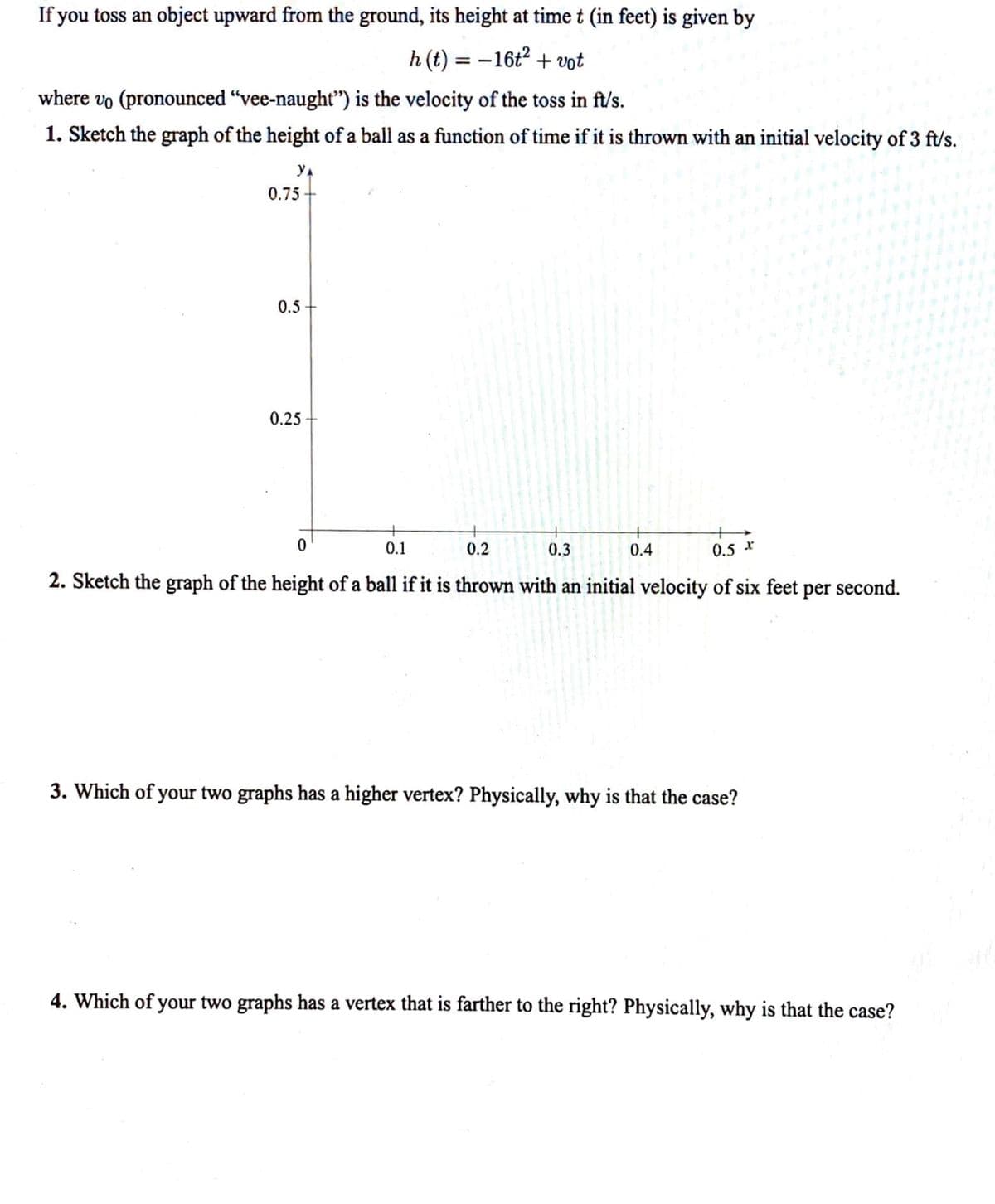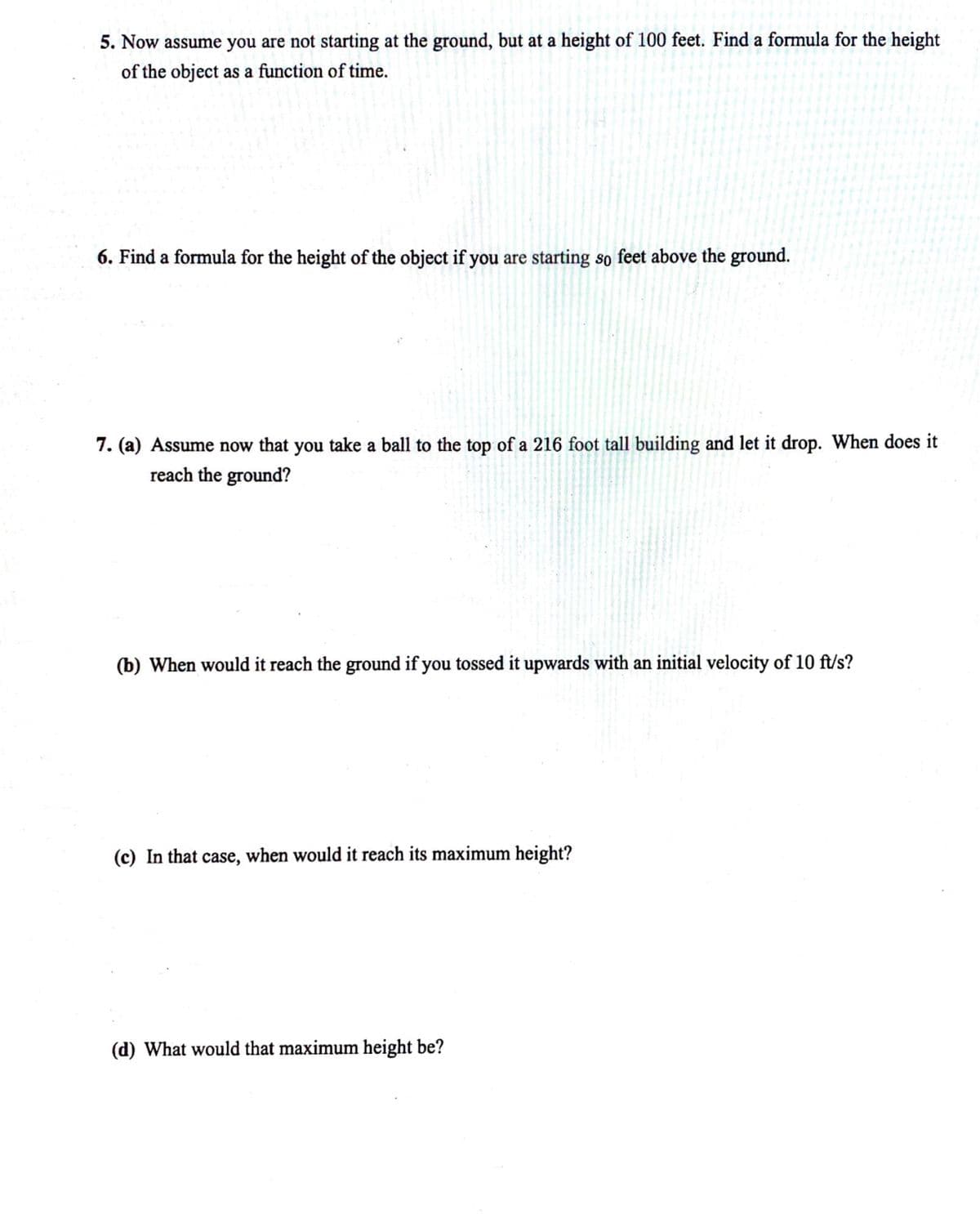If you toss an object upward from the ground, its height at time t (in feet) is given by h(t) = -16t? + vot where vo (pronounced "vee-naught") is the velocity of the toss in ft/s. 1. Sketch the graph of the height of a ball as a function of time if it is thrown with an initial velocity of 3 ft/s. yA 0.75 0.5 0.25 0.1 0.2 0.3 0.4 0.5 * 2. Sketch the graph of the height of a ball if it is thrown with an initial velocity of six feet per second. 3. Which of your two graphs has a higher vertex? Physically, why is that the case?
If you toss an object upward from the ground, its height at time t (in feet) is given by h(t) = -16t? + vot where vo (pronounced "vee-naught") is the velocity of the toss in ft/s. 1. Sketch the graph of the height of a ball as a function of time if it is thrown with an initial velocity of 3 ft/s. yA 0.75 0.5 0.25 0.1 0.2 0.3 0.4 0.5 * 2. Sketch the graph of the height of a ball if it is thrown with an initial velocity of six feet per second. 3. Which of your two graphs has a higher vertex? Physically, why is that the case?
Related questions
Question
If you toss an object upward from the ground, its height at time t (in feet) is given by h(t) = -16t2 + v0t
where v0 is the velocity of the toss in ft/s.

Transcribed Image Text:If you toss an object upward from the ground, its height at time t (in feet) is given by
h(t) = -16t2 + vot
where vo (pronounced "vee-naught") is the velocity of the toss in ft/s.
1. Sketch the graph of the height of a ball as a function of time if it is thrown with an initial velocity of 3 ft/s.
YA
0.75
0.5 -
0.25
0.1
0.2
0.3
0.4
0.5 *
2. Sketch the graph of the height of a ball if it is thrown with an initial velocity of six feet per second.
3. Which of your two graphs has a higher vertex? Physically, why is that the case?
4. Which of your two graphs has a vertex that is farther to the right? Physically, why is that the case?

Transcribed Image Text:5. Now assume you are not starting at the ground, but at a height of 100 feet. Find a formula for the height
of the object as a function of time.
6. Find a formula for the height of the object if you are starting so feet above the ground.
7. (a) Assume now that you take a ball to the top of a 216 foot tall building and let it drop. When does it
reach the ground?
(b) When would it reach the ground if you tossed it upwards with an initial velocity of 10 ft/s?
(c) In that case, when would it reach its maximum height?
(d) What would that maximum height be?
Expert Solution
This question has been solved!
Explore an expertly crafted, step-by-step solution for a thorough understanding of key concepts.
Step by step
Solved in 3 steps with 2 images
